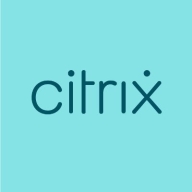

Citrix XenServer and Red Hat OpenShift offer virtualization solutions, with Citrix XenServer having an upper hand in cost-effectiveness, while Red Hat OpenShift is favored for its comprehensive enterprise features.
Features: Citrix XenServer boasts easy installation, live migration of virtual machines, and a Windows-based management interface. Its open-source Xen hypervisor enhances performance and stability. Red Hat OpenShift provides seamless integration with CI/CD pipelines, robust security features, and strong multi-cloud support, making it ideal for enterprise deployments.
Room for Improvement: Citrix XenServer could enhance its disk management sophistication and expand features beyond basic virtualization. Additionally, it could benefit from better scaling options for larger deployments. Red Hat OpenShift may improve its user interface to make cluster management simpler and work on more seamless integration of non-Red Hat products. It could also enhance ease of use for non-enterprise users.
Ease of Deployment and Customer Service: Citrix XenServer offers an easy deployment process, favorable for users without extensive Linux knowledge, with responsive customer support. OpenShift's deployment is smooth for enterprises, providing excellent support and documentation, which helps in managing complex environments efficiently.
Pricing and ROI: Citrix's pricing includes a free version, making it accessible to small setups, with ROI seen through low initial costs and minimal maintenance. OpenShift comes with higher upfront costs reflective of its enterprise capabilities, where ROI is achieved through its advanced features and comprehensive integration options, suitable for complex infrastructures.
My clients generally maintain their Citrix infrastructure without shifting, suggesting stability and reliable operation as Citrix XenServer is fully established.
With OpenShift combined with IBM Cloud App integration, I can spin an integration server in a second as compared to traditional methods, which could take days or weeks.
Moving to OpenShift resulted in increased system stability and reduced downtime, which contributed to operational efficiency.
It is always advisable to get the bare minimum that you need, and then add more when necessary.
With valid licenses, we can access hotfixes, service packs, knowledge base, self-help tools, diagnostics, downloads, live chat, and phone support.
They do not provide adequate support for midsize businesses.
There appear to be very few engineers at Citrix who understand the problems.
Red Hat's technical support is responsive and effective.
I have been pretty happy in the past with getting support from Red Hat.
Red Hat's technical support is good, and I would rate it a nine out of ten.
Familiarity with Linux can enhance its performance and usability.
The on-demand provisioning of pods and auto-scaling, whether horizontal or vertical, is the best part.
OpenShift's horizontal pod scaling is more effective and efficient than that used in Kubernetes, making it a superior choice for scalability.
Red Hat OpenShift scales excellently, with a rating of ten out of ten.
I haven't had any significant issues with Citrix XenServer installations over the last 10-15 years.
It provides better performance yet requires more resources compared to vanilla Kubernetes.
I've had my cluster running for over four years.
It performs well under load, providing the desired output.
Although the product is technically competitive, it is not widely known or used due to poor marketing.
Citrix needs to improve the hypervisor, specifically in security and performance.
We can implement high availability and live migration with pools, along with security and backup to enable role-based access control for safer management.
Learning OpenShift requires complex infrastructure, needing vCenter integration, more advanced answers, active directory, and more expensive hardware.
Red Hat OpenShift's biggest disadvantage is they do not provide any private cloud setup where we can host on our site using their services.
We should aim to include VMware-like capabilities to be competitive, especially considering cost factors.
It is cheaper compared to its competitors.
Organizations save substantial money because competing solutions, such as VMware, cost double or triple.
The pricing and licensing policy of Citrix XenServer is not transparent and quite confusing.
Initially, licensing was per CPU, with a memory cap, but the price has doubled, making it difficult to justify for clients with smaller compute needs.
Red Hat can improve on the pricing part by making it more flexible and possibly on the lower side.
The cost of OpenShift is very high, particularly with the OpenShift Plus package, which includes many products and services.
The most valuable feature is transferring and sharing applications that allow users to move files between devices, including smartphones, tablets, and computers without needing USB cables, internet connections, or data usage.
It provides secure access to applications and resources, which is crucial for us and our clients.
It is user-friendly and easy to deploy, making it an attractive option.
Because it was centrally managed in our company, many metrics that we had to write code for were available out of the box, including utilization, CPU utilization, memory, and similar metrics.
The concept of containers and scaling on demand is a feature I appreciate the most about Red Hat OpenShift.
A valuable feature of Red Hat OpenShift is its ability to handle increased loads by automatically adding nodes.
| Product | Market Share (%) |
|---|---|
| Red Hat OpenShift | 2.9% |
| Citrix XenServer | 4.8% |
| Other | 92.3% |


| Company Size | Count |
|---|---|
| Small Business | 29 |
| Midsize Enterprise | 8 |
| Large Enterprise | 18 |
| Company Size | Count |
|---|---|
| Small Business | 17 |
| Midsize Enterprise | 4 |
| Large Enterprise | 40 |
Citrix XenServer provides virtualization with high availability and robust security, offering seamless VM migration and centralized management through XenCenter. Its expansive compatibility and integration enhance its appeal, particularly for SMBs.
Citrix XenServer is recognized for its user-friendly virtualization capabilities, facilitating dynamic scalability and efficient resource management. It supports a wide range of operating systems and integrates with Citrix solutions for improved operations. Businesses benefit from its affordability and ease of deployment. Despite its strengths, users seek improvements in third-party tool integration, network and backup management, and storage flexibility. High costs, limited Linux support, system complexity, technical support, and hardware compatibility remain challenges. An updated and intuitive interface is in demand for more seamless operations across platforms.
What are the key features of Citrix XenServer?In diverse industries, Citrix XenServer is leveraged for server and desktop virtualization, cloud automation, and infrastructure management. Many deploy it for virtual desktop infrastructure, application delivery, on-premises data centers, and to support Citrix application delivery like XenApp and XenDesktop. Enterprises migrating from VMware often find Citrix XenServer cost-efficient for these applications, serving as a main computing platform for enterprise applications including ERP systems and SQL Servers.
Red Hat OpenShift offers a robust, scalable platform with strong security and automation, suitable for container orchestration, application deployment, and microservices architecture.
Designed to modernize applications by transitioning from legacy systems to cloud-native environments, Red Hat OpenShift provides powerful CI/CD integration and Kubernetes compatibility. Its security features, multi-cloud support, and source-to-image functionality enhance deployment flexibility. While the GUI offers user-friendly navigation, users benefit from its cloud-agnostic nature and efficient lifecycle management. However, improvements are needed in documentation, configuration complexity, and integration with third-party platforms. Pricing and high resource demands can also be challenging for wider adoption.
What are the key features of Red Hat OpenShift?Red Hat OpenShift is strategically implemented for diverse industries focusing on container orchestration and application modernization. Organizations leverage it for migrating applications to cloud-native environments and managing CI/CD pipelines. Its functionality facilitates efficient resource management and microservices architecture adoption, supporting enterprise-level DevOps practices. Users employ it across cloud and on-premises platforms to drive performance improvements.
We monitor all Server Virtualization Software reviews to prevent fraudulent reviews and keep review quality high. We do not post reviews by company employees or direct competitors. We validate each review for authenticity via cross-reference with LinkedIn, and personal follow-up with the reviewer when necessary.